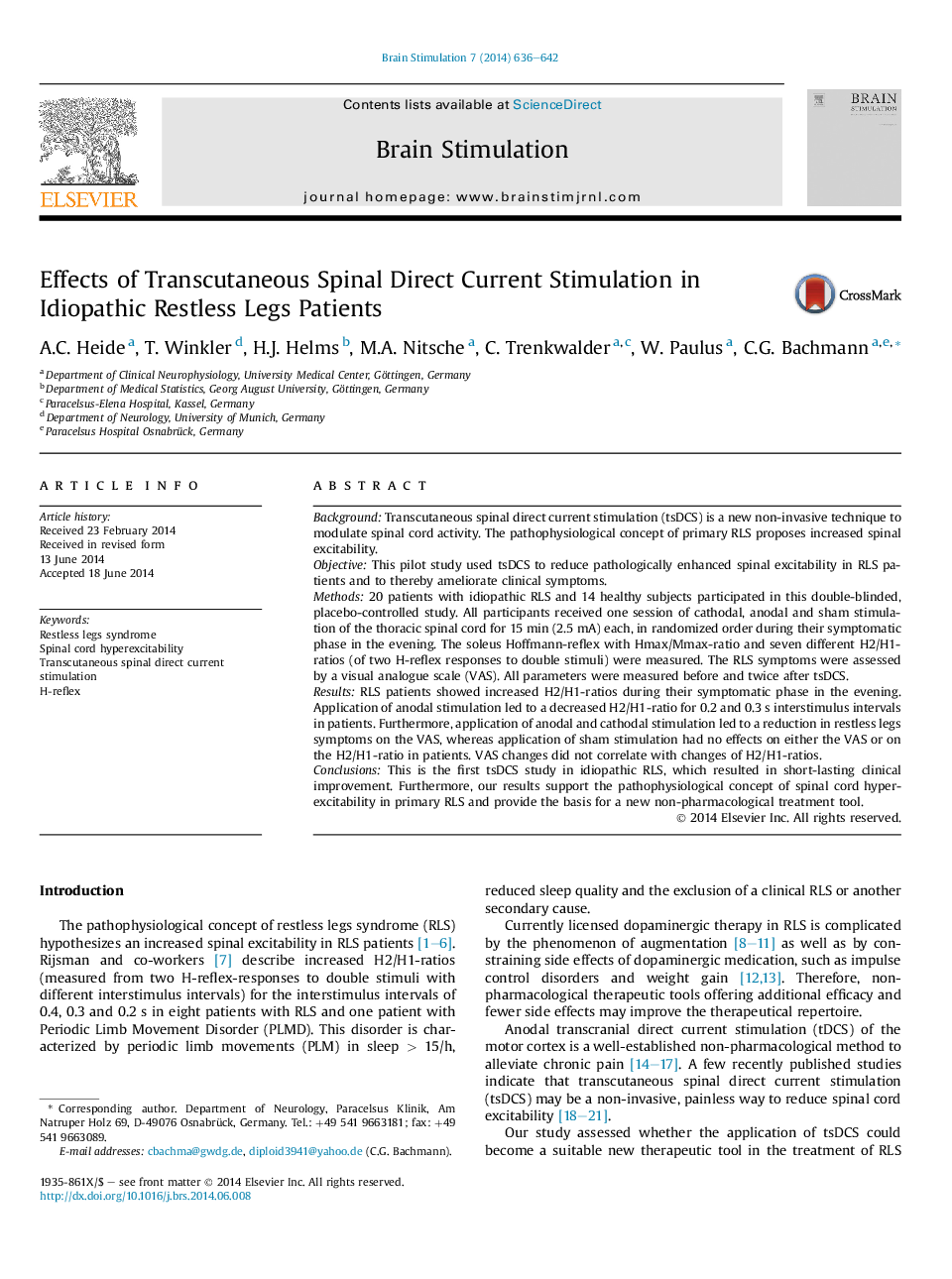| کد مقاله | کد نشریه | سال انتشار | مقاله انگلیسی | نسخه تمام متن |
|---|---|---|---|---|
| 6005587 | 1184667 | 2014 | 7 صفحه PDF | دانلود رایگان |
- This is the first study to apply tsDCS as a possible new treatment approach in RLS patients. The application of tsDCS resulted in a short-lasting clinical improvement, thus paving the way for the development of a completely new non-pharmacological treatment method for this disease. This is highly important for RLS patients who do not respond or do not tolerate the standard pharmacological treatment regimes.
- Our findings support the pathophysiological concept of spinal cord hyperexcitability in symptomatic RLS patients: We observed increased H-reflex parameters (H2/H1-ratios) in symptomatic RLS patients, confirming the findings of Rijsman and co-workers (2005).
- Furthermore, application of anodal tsDCS in the present study induced a decrease of elevated H2/H1-ratios in RLS patients, thus reflecting a decrease in spinal excitability.
BackgroundTranscutaneous spinal direct current stimulation (tsDCS) is a new non-invasive technique to modulate spinal cord activity. The pathophysiological concept of primary RLS proposes increased spinal excitability.ObjectiveThis pilot study used tsDCS to reduce pathologically enhanced spinal excitability in RLS patients and to thereby ameliorate clinical symptoms.Methods20 patients with idiopathic RLS and 14 healthy subjects participated in this double-blinded, placebo-controlled study. All participants received one session of cathodal, anodal and sham stimulation of the thoracic spinal cord for 15Â min (2.5Â mA) each, in randomized order during their symptomatic phase in the evening. The soleus Hoffmann-reflex with Hmax/Mmax-ratio and seven different H2/H1-ratios (of two H-reflex responses to double stimuli) were measured. The RLS symptoms were assessed by a visual analogue scale (VAS). All parameters were measured before and twice after tsDCS.ResultsRLS patients showed increased H2/H1-ratios during their symptomatic phase in the evening. Application of anodal stimulation led to a decreased H2/H1-ratio for 0.2 and 0.3Â s interstimulus intervals in patients. Furthermore, application of anodal and cathodal stimulation led to a reduction in restless legs symptoms on the VAS, whereas application of sham stimulation had no effects on either the VAS or on the H2/H1-ratio in patients. VAS changes did not correlate with changes of H2/H1-ratios.ConclusionsThis is the first tsDCS study in idiopathic RLS, which resulted in short-lasting clinical improvement. Furthermore, our results support the pathophysiological concept of spinal cord hyperexcitability in primary RLS and provide the basis for a new non-pharmacological treatment tool.
Journal: Brain Stimulation - Volume 7, Issue 5, SeptemberâOctober 2014, Pages 636-642
